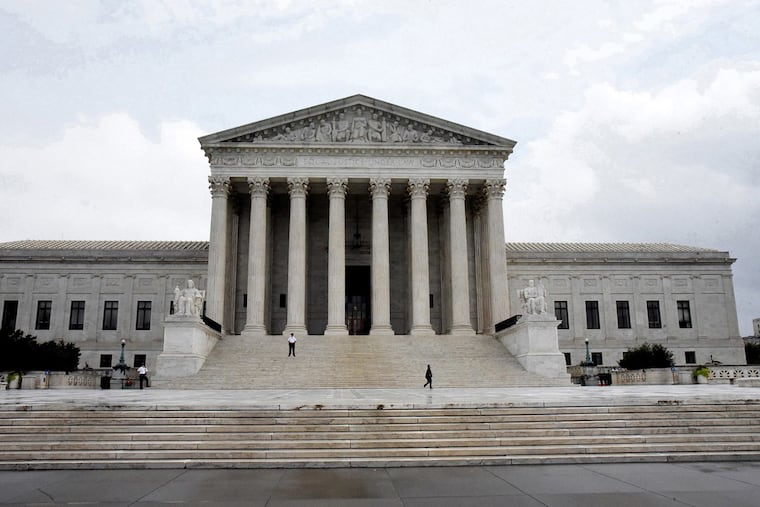The war against gerrymandering successfully goes on | Opinion
If Americans were hoping for a decisive blow against the rigging of maps, the Supreme Court went in the opposite direction and slammed the door shut once and for all.

Partisan gerrymandering has had its long-awaited day of reckoning at the Supreme Court. Unfortunately, if Americans were hoping for a decisive blow against the rigging of maps, the Supreme Court went in the opposite direction and slammed the door shut once and for all.
But while the ruling is disappointing, especially given the egregious facts of the cases, the fight against gerrymandering is far from over. That’s because, despite the drama of a showdown at the Supreme Court, the fight was never only about winning in the federal courts. The fight against gerrymandering has always been, and remains, a war with multiple fronts, including state courts, the ballot box, the nation’s legislatures, and Congress. And on those other fronts, it is a fight that is not only going well but producing victory after victory. With the Supreme Court having made clear that no relief from the federal courts is coming, it’s more important than ever to double down on the fronts where gains are being made.
Some of the biggest victories in recent years have come not from hand-wringing courts but at the ballot box. Last year, voters in a record five states adopted redistricting reforms, ranging from independent commissions in Michigan and Colorado to strong anti-gerrymandering rules in Ohio. These reforms follow successful voter-led initiatives in California and Florida a decade earlier.
And far from being partisan power grabs, all these reforms passed with overwhelming bipartisan support. In Ohio, the state’s 2018 redistricting reform amendment won a supermajority in every single congressional district, red and blue. Reform measures in other states in 2018, likewise, were popular across the political spectrum. Talk to people who went door to door to canvass for signatures, and they will tell you it was some of the easiest signature gathering they’ve ever done. Republican doors, Democratic doors, it didn’t matter. Everyone signed, a powerful signal, if there ever was one, of how frustrated Americans are with gerrymandering.
But the bipartisan momentum for reform is coming more and more not just from grassroots activists armed with clipboards but from lawmakers themselves. In New Hampshire, lawmakers passed a bill currently awaiting the governor’s signature that will create an independent advisory commission to draw maps starting in 2021. Ditto Virginia, where lawmakers almost unanimously passed a constitutional amendment creating a commission to draw maps for legislative consideration. (The amendment still needs to pass again next year and go to voters before it becomes law.) Campaigns to put redistricting reform measures on the ballot are underway in Arkansas, Nebraska, and Oklahoma. Others may soon join the list.
But, of course, reform isn’t realistic in every state. That’s why it is also vital for Congress to act. H.R. 1, already passed in the House, would build on successful reforms in the states and require every state to use an independent commission to draw congressional district boundaries. As importantly, it would put in place strong measures to ensure transparency and the ability of the public to have a meaningful role in a process that historically has occurred behind closed doors and been dominated by political operatives and insiders.
Unfortunately, H.R. 1 is all but dead in the Senate thanks to Majority Leader Mitch McConnell’s unwillingness to even allow a hearing on the bill, much less let it come to a vote. That means that the broadest reforms at the national level will have to wait until after the next round of redistricting. But despite that, there still are some simple things that Congress can do to make sure the maps drawn in early 2021 are fairer. As a bridge to broader reforms, the next Congress should make it a priority to pass, as one of its very first acts, a law banning partisan gerrymandering and putting in place uniform, clear, and transparent rules for the redrawing of congressional maps will take place that winter and spring.
State courts, in the meantime, can be another avenue for attacking gerrymandering. In 2018, the Pennsylvania Supreme Court struck down that state’s gerrymandered congressional map that locked in a 13-5 Republican advantage in a state that is one of the most competitive in the nation. Under the new map that replaced it, Pennsylvania went from having one of the least responsive maps in the country to one of the most. A legal challenge is similarly pending in North Carolina to gerrymandered legislative maps.
By wide margins, Americans of all political persuasions say they hate gerrymandering. The good news is that they aren’t dependent on the Supreme Court to fix it.
Michael Li serves as senior counsel for the Brennan Center’s Democracy Program, where his work focuses on redistricting, voting rights, and elections.